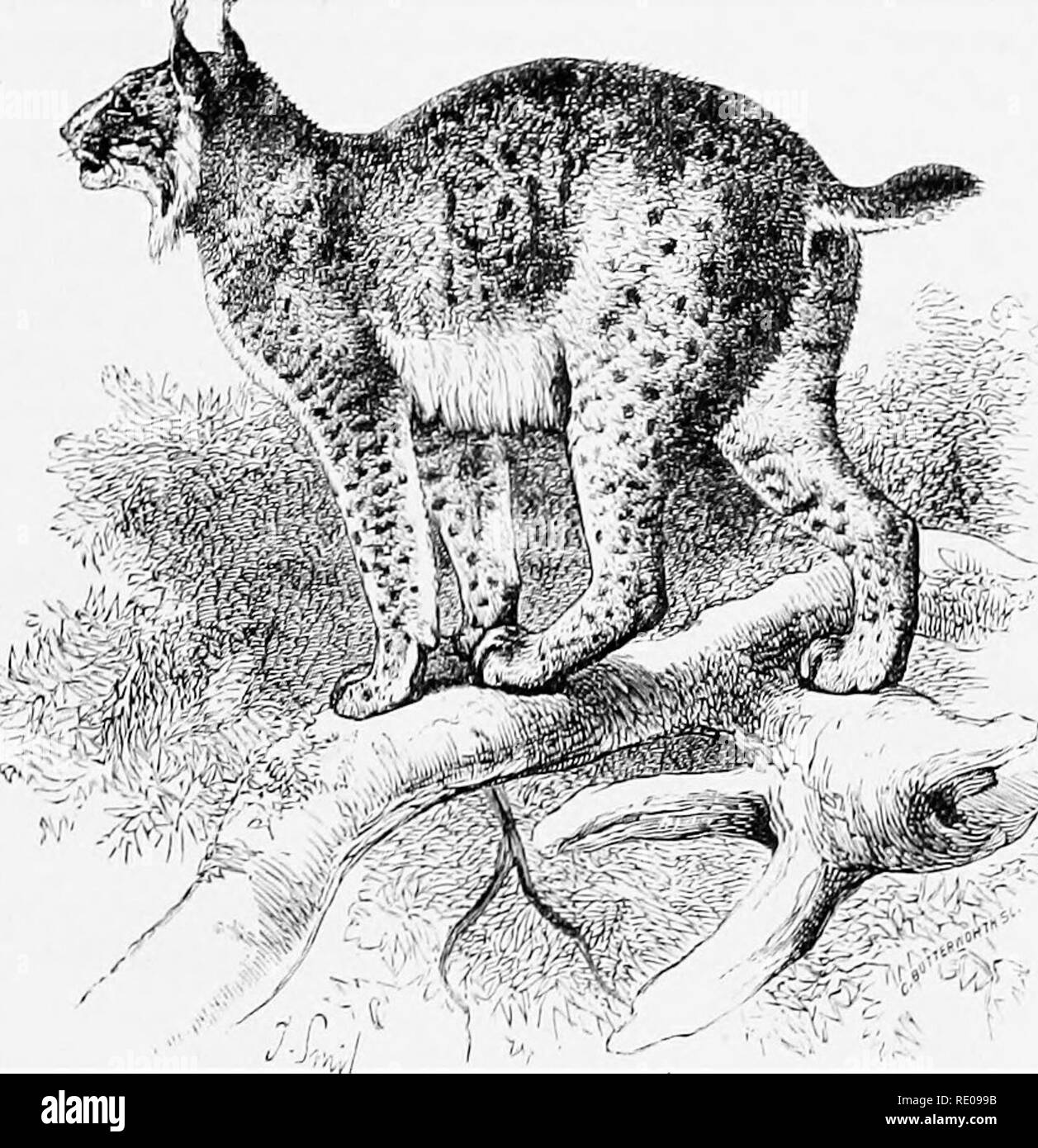. An introduction to the study of mammals living and extinct. Mammals. FELID^ 519 are F. lynx, of Scandinavia, Russia, Northern Asia, and till lately the forest regions of Central Europe; though not an inhabitant of Britain during the historic period, its remains have been found in cave-deposits of Pleistocene age; F. cervaria, Siberia; F. pardina, Turkey, Greece, Sicily, Sardinia, and Spain; and F. isahellina, Tibet. The American varieties are F. canadensis, the most northern species, and F. rufa, the American Wild Cat or Bay Lynx, extensively dis- tributed from the Atlantic to the Pacific th

Image details
Contributor:
The Book Worm / Alamy Stock PhotoImage ID:
RE099BFile size:
7.1 MB (494.1 KB Compressed download)Releases:
Model - no | Property - noDo I need a release?Dimensions:
1555 x 1607 px | 26.3 x 27.2 cm | 10.4 x 10.7 inches | 150dpiMore information:
This image is a public domain image, which means either that copyright has expired in the image or the copyright holder has waived their copyright. Alamy charges you a fee for access to the high resolution copy of the image.
This image could have imperfections as it’s either historical or reportage.
. An introduction to the study of mammals living and extinct. Mammals. FELID^ 519 are F. lynx, of Scandinavia, Russia, Northern Asia, and till lately the forest regions of Central Europe; though not an inhabitant of Britain during the historic period, its remains have been found in cave-deposits of Pleistocene age; F. cervaria, Siberia; F. pardina, Turkey, Greece, Sicily, Sardinia, and Spain; and F. isahellina, Tibet. The American varieties are F. canadensis, the most northern species, and F. rufa, the American Wild Cat or Bay Lynx, extensively dis- tributed from the Atlantic to the Pacific throughout nearly the whole latitude of the United States, but replaced in Texas and. I''lu. I'-JS.—European Lynx {Fdis lynx). Froui a drawing, ' hy Wolf in Elliot's Monograph of the Felidce. southern California by F. inaculatu, and in northern Oregon and Washington territory by F. fasciata. In both cases, as might be supposed, specimens obtained from the more southern climates are shorter in their fur, more brightly coloured, and more distinctly spotted than those from colder regions. When only a few individuals of each most markedly different form are examined the distinctions are sufficiently evident. The occur- rence, however, of transitional or intermediate forms makes it extremely difficult to draw the line between the different varieties or species, or to assign definite characters by which they can be separated. Wherefore it is best at present to accept the so-called species as only provisional, and wait until more abundant materials, with fuller knowledge of the localities from which they are derived, . Please note that these images are extracted from scanned page images that may have been digitally enhanced for readability - coloration and appearance of these illustrations may not perfectly resemble the original work.. Flower, William Henry, 1831-1899; Lydekker, Richard, 1849-1915. London, A. and C. Black